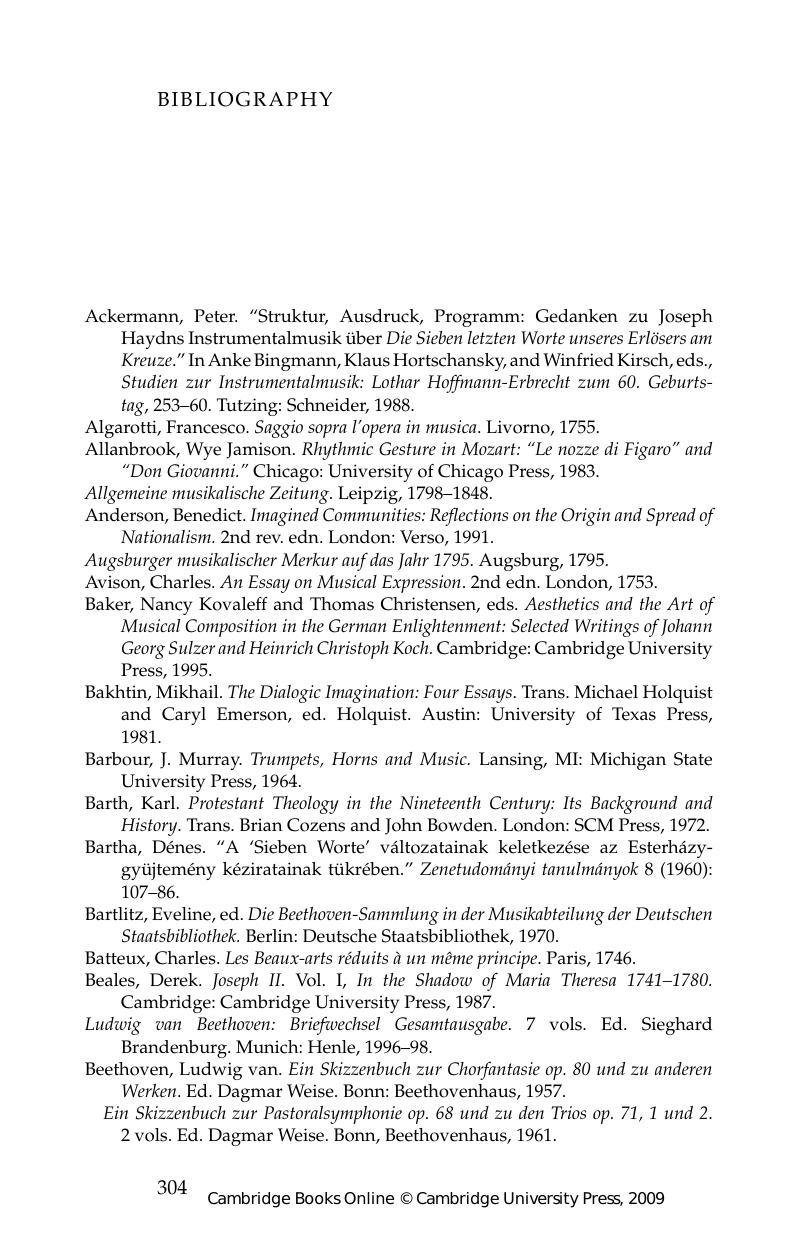Book contents
- Frontmatter
- Contents
- Acknowledgments
- Note to the reader
- Introduction
- 1 Paradise lost: Dittersdorf's Four Ages of the World and the crisis of Austrian enlightened despotism
- 2 Preaching without words: Reform Catholicism versus divine mystery in Haydn's Seven Last Words
- 3 The boundaries of the art: characteristic music in contemporary criticism and aesthetics
- 4 Paradise regained: time, morality, and humanity in Beethoven's Pastoral Symphony
- 5 Making memories: symphonies of war, death, and celebration
- Appendixes
- Bibliography
- Index
- References
Bibliography
Published online by Cambridge University Press: 11 January 2010
- Frontmatter
- Contents
- Acknowledgments
- Note to the reader
- Introduction
- 1 Paradise lost: Dittersdorf's Four Ages of the World and the crisis of Austrian enlightened despotism
- 2 Preaching without words: Reform Catholicism versus divine mystery in Haydn's Seven Last Words
- 3 The boundaries of the art: characteristic music in contemporary criticism and aesthetics
- 4 Paradise regained: time, morality, and humanity in Beethoven's Pastoral Symphony
- 5 Making memories: symphonies of war, death, and celebration
- Appendixes
- Bibliography
- Index
- References
Summary

- Type
- Chapter
- Information
- The Characteristic Symphony in the Age of Haydn and Beethoven , pp. 304 - 318Publisher: Cambridge University PressPrint publication year: 2002

